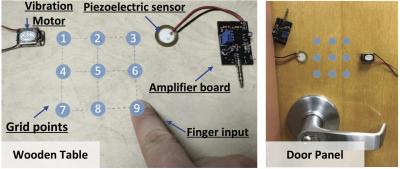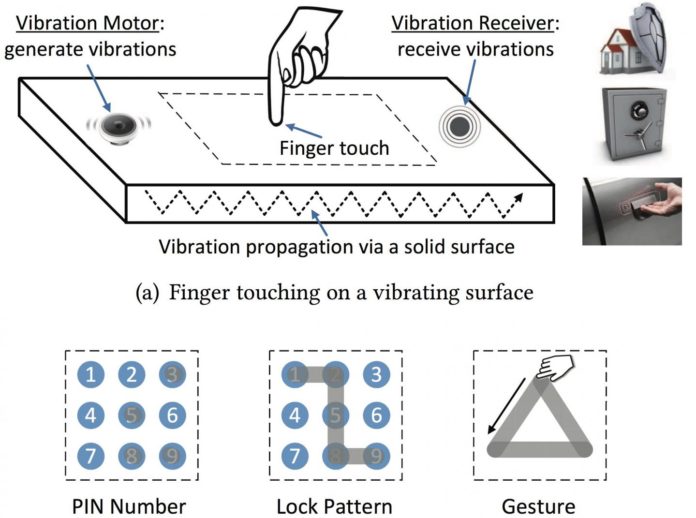Engineers at Rutgers University have created a system called VibWrite that senses finger vibrations to verify users. Cheap in cost, this smart security system allows user verification when fingers touch any solid surface.
As its engineers reported, it could eventually be used to gain access to homes, apartment buildings, cars, appliances, anything with a solid surface.
Yingying (Jennifer) Chen, a professor in the Department of Electrical and Computer Engineering said, “Everyone’s finger bone structure is unique, and their fingers apply different pressures on surfaces, so sensors that detect subtle physiological and behavioral differences can identify and authenticate a person.”

Most of the security systems rely on intercoms, cameras, cards or fingerprints to authenticate users. But all these equipment requires expensive equipment, complex hardware installation and diverse maintenance needs.
The VibWrite integrates passcode, behavioral and physiological characteristics. It mainly relies on a touch-sensing technique by using vibration signals.
Chen said, “Smart access systems that use fingerprinting and iris-recognition are very secure, but they’re probably more than 10 times as expensive as our VibWrite system, especially when you want to widely deploy them.”
“The authentication process can be performed on any solid surface beyond touch screens and on any screen size. It is resilient to ‘side-channel attacks‘ – when someone places a hidden vibration receiver on the surface or uses a nearby microphone to capture vibration signals. It also resists several other types of attacks, including when an attacker learns passcodes after observing a user multiple times.”
There are an inexpensive vibration motor and receiver embedded inside the system. Both hardware installation and maintenance are easy. It is expected that the system will reach the market within a couple of years.
Scientists are now working to make it more advanced by deploying multiple sensor pairs, refine the hardware and upgrade authentication algorithms. They also need to further test the system outdoors to account for varying temperatures, humidity, winds, wetness, dust, dirt and other conditions.
